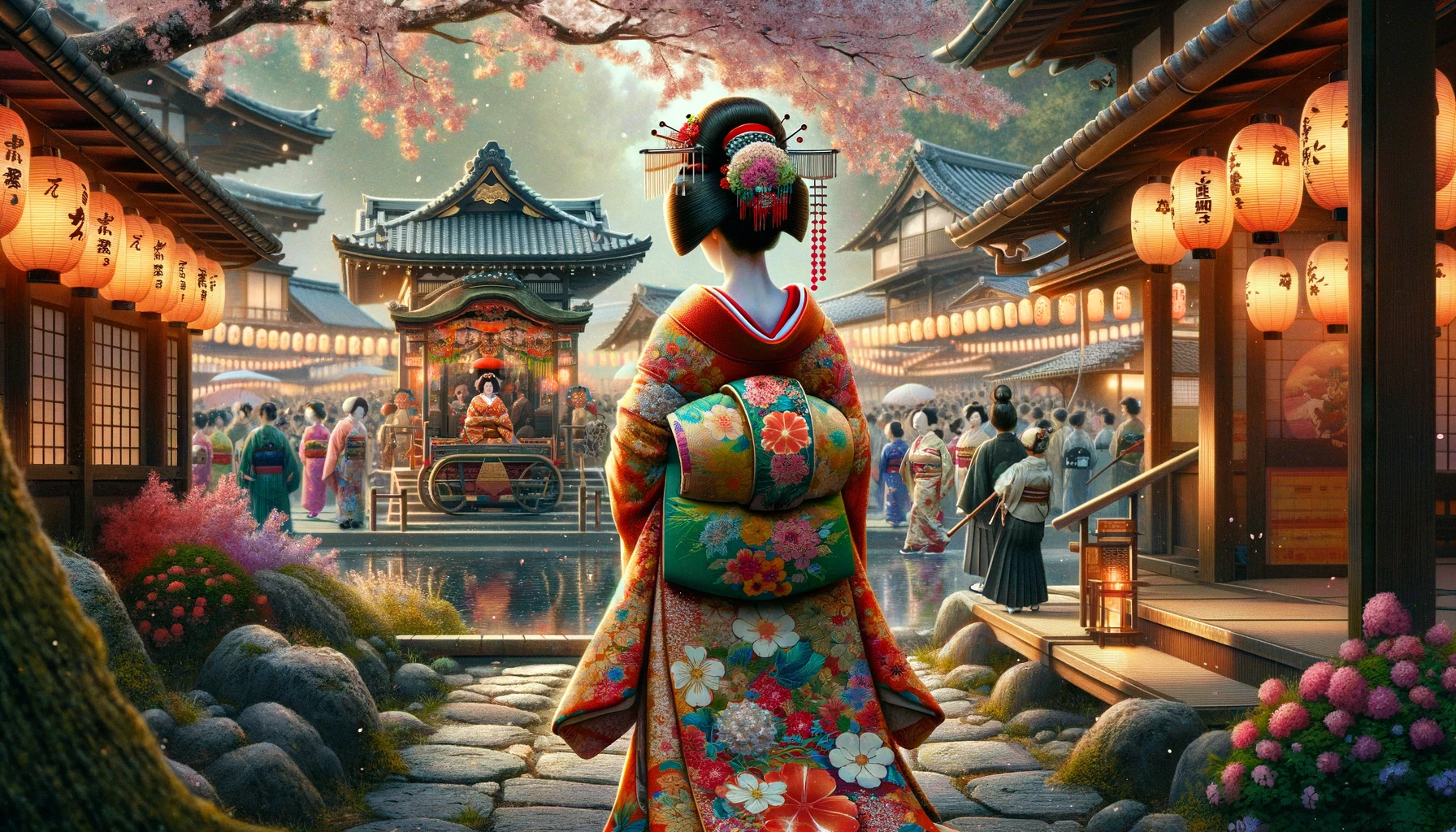
Traveling through Japan offers a unique opportunity to immerse yourself in a culture where tradition meets modernity. While the neon lights of Tokyo and the futuristic skyline of Osaka may capture your attention, the soul of Japan lies in its timeless traditions. From the elegant grace of the Geisha to the vibrant celebrations of Matsuri festivals and the profound discipline of sword art, Japan’s cultural heritage provides an unforgettable experience. Whether you’re wandering through Kyoto’s historic streets or participating in a local festival, the journey through traditional Japan is one that leaves a lasting impression.
The Grace and Mystery of the Geisha
One of the most iconic symbols of traditional Japan is the Geisha, a living embodiment of grace, beauty, and art. The world of the Geisha, often misunderstood and shrouded in mystery, is a captivating realm where centuries-old customs and practices continue to thrive.
Geisha, meaning “person of the arts,” are highly skilled in traditional Japanese arts such as dance, music, and poetry. Their training begins at a young age, often as Maiko (apprentice Geisha), where they learn the intricate skills required to entertain and engage guests. The life of a Geisha is one of discipline and dedication, with every movement, gesture, and word meticulously crafted to create an atmosphere of elegance and refinement.
Kyoto, particularly the Gion district, is the heart of the Geisha tradition. Here, visitors can catch a glimpse of these elusive figures, dressed in exquisite kimonos and white-painted faces, as they make their way to teahouses for evening appointments. Experiencing a traditional Geisha performance, with its subtle yet powerful expressions, offers a window into a world where time seems to stand still, preserving the beauty and artistry of Japan’s cultural heritage.
The Vibrant World of Matsuri: Festivals that Ignite the Spirit
Japan is a country that loves its festivals, known as Matsuri. These celebrations, held throughout the year, are vibrant expressions of community spirit, religious devotion, and cultural pride. Each Matsuri is unique, reflecting the local traditions and customs of the region where it is held.
One of the most famous Matsuri is the Gion Matsuri in Kyoto, held every July. This festival, which dates back over a thousand years, is a month-long celebration featuring elaborate parades, traditional music, and stunning floats called Yamaboko. The Gion Matsuri is a sensory overload, with the sounds of taiko drums, the scent of street food, and the sight of beautifully dressed participants creating an atmosphere of joyous energy.
Another notable Matsuri is the Nebuta Matsuri in Aomori, where enormous illuminated floats depicting warriors, gods, and mythical creatures are paraded through the streets. The floats are accompanied by lively dancers and musicians, creating a dynamic spectacle that attracts visitors from all over Japan and beyond.
Participating in a Matsuri is more than just attending a festival; it’s about becoming part of the local community, experiencing the deep connection between Japan’s people and their cultural traditions. Whether you’re carrying a portable shrine during a procession or simply watching from the sidelines, the energy and passion of Matsuri are contagious, offering a profound insight into the Japanese way of life.
The Art of the Sword: The Spirit of the Samurai Lives On
The samurai, with their code of honor and masterful swordsmanship, are legendary figures in Japanese history. Although the samurai class was officially abolished in the 19th century, their spirit lives on through the art of the sword, or Kendo, and other martial traditions.
Kendo, meaning “the way of the sword,” is a modern martial art that evolved from traditional samurai swordsmanship. Practitioners of Kendo engage in rigorous training, using bamboo swords and protective armor to simulate combat. The emphasis is not just on physical technique but also on cultivating a strong spirit, discipline, and respect for one’s opponent. Watching a Kendo match, with its sharp, precise movements and intense focus, is a powerful reminder of the samurai’s enduring legacy.
Iaido, another sword art, involves the smooth, controlled drawing of the sword from its scabbard, cutting, and re-sheathing in a single fluid motion. Unlike Kendo, Iaido is often practiced solo, with an emphasis on mindfulness and the perfection of form. The slow, deliberate movements of Iaido practitioners reflect the deep connection between the physical and the spiritual, a core principle of traditional Japanese martial arts.
For those interested in experiencing these ancient practices firsthand, many dojos (training halls) across Japan offer opportunities for visitors to learn the basics of swordsmanship. Participating in a Kendo or Iaido class, even briefly, provides a unique perspective on Japan’s martial traditions and the disciplined mindset that continues to influence Japanese society today.
Preserving the Past: Japan’s Dedication to Cultural Heritage
Japan’s commitment to preserving its cultural heritage is evident in its many UNESCO World Heritage Sites, historic towns, and traditional practices that continue to thrive despite the pressures of modernization. This dedication is not just about maintaining physical structures or artifacts but also about passing down intangible cultural traditions to future generations.
The city of Nara, for example, is home to some of Japan’s most ancient temples and shrines, including Todai-ji, with its colossal Great Buddha statue, and Kasuga Taisha, known for its thousands of bronze and stone lanterns. These sites offer a glimpse into Japan’s early history and the profound influence of Buddhism and Shintoism on the nation’s cultural development.
In addition to its historic sites, Japan is also home to many living traditions, such as tea ceremonies, calligraphy, and traditional crafts like pottery and textile weaving. These practices are often taught through apprenticeships, where knowledge and skills are passed down from master to student in a direct line that can span generations. Visiting a traditional workshop or participating in a tea ceremony offers a hands-on experience of Japan’s cultural heritage, allowing travelers to connect with the deeper aspects of Japanese tradition.
The preservation of cultural heritage in Japan is also evident in the country’s festivals and seasonal celebrations. Many Matsuri and rituals, such as the annual Gion Matsuri or the Shinto purification rites at Ise Shrine, have been performed for centuries, unchanged in their form and significance. By participating in these events, travelers can witness the living traditions that continue to shape Japanese identity and gain a deeper understanding of the cultural forces that have defined Japan for millennia.
Conclusion: A Journey Through Time in Traditional Japan
Traveling through traditional Japan is like stepping into a different world, where the past is not just remembered but actively lived. From the delicate artistry of the Geisha to the vibrant energy of Matsuri festivals and the disciplined practice of swordsmanship, Japan’s cultural heritage offers a rich tapestry of experiences that leave a lasting impact on all who visit.
Whether you’re wandering through the historic streets of Kyoto, participating in a local festival, or learning the art of the sword, the journey through traditional Japan is a deeply enriching experience. It is an opportunity to connect with a culture that values beauty, honor, and tradition, and to take home not just memories, but a deeper appreciation for the timeless aspects of Japanese life.
This exploration of Japan’s traditional culture is more than just sightseeing; it is a journey into the heart of a nation where the past and present coexist in perfect harmony. As you travel through this fascinating country, you’ll discover that Japan’s true beauty lies not just in its natural landscapes or modern cities, but in the enduring traditions that continue to inspire and captivate the world.








